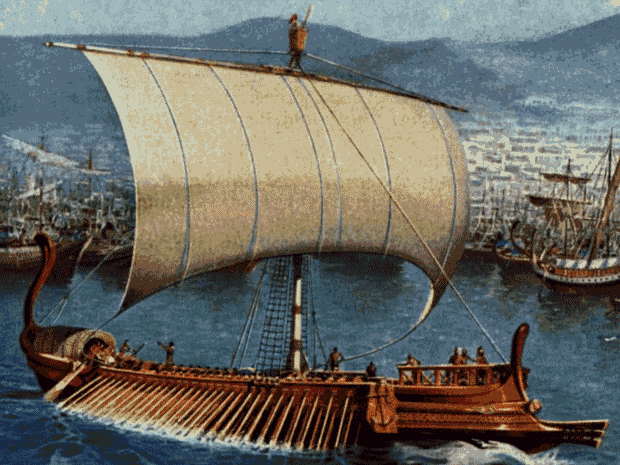The Myth of Atlantis: Thera

There is some very good evidence that Atlantis was a real place. However, most that has been written about it is pure myth. If real, the island of Atlantis was not in the Atlantic Ocean, was not some super-advanced civilization and was not some alien colony. The real event that may well have sparked the Atlantis myth occurred during the Bronze Age, around the 17th century BC, in the Medeterranean and involved the fairly well-studied Minoan culture.
The center of the Minoan culture was the island of Crete where the famous Palace of Knossos is located. However, another important Minoan settlement was on the volcanic island of Thera, also called today Santorini. Thera was a large, circular island that had been inhabited since the Neolithic. Like other Minoan sites, Thera's main Bronze Age settlement (Akrotiri) consisted of colorful, multi-storied buildings served by a sophisticated drainage system. Thera's central location between Crete and the Greek mainland made it a major port for the very trade-oriented Minoan culture.
The Minoan culture in general was an interesting phase of Aegean history. The wall paintings of the Minoan palaces, with their colorful dolphins, bare-breasted priestesses and acrobats leaping over bulls, are both beautiful and intriguing. Unfortunately, the Minoan language has not yet been deciphered. Furthermore, the discovery of an apparantly syllabic writing system unrelated to Minoan or any other known language has also been found on Crete. This so-called Phaistos disc is not likely to ever be deciphered since only the single item has been found and it does not contain enough individual words or sufficient context to be worked out.
The end of this phase of human habitation of Thera came very dramatically in the last quarter of the 17th century BC. One or more earthquakes struck first, forcing the inhabitants to abandon Akrotiri. But these earthquakes were followed (after a period of at least a year) by one of the world's largest know volcanic eruptions. There were no human remains or much sign of a hasty exodus from Akrotiri, which suggests that the devastation left by the earthquake forced an ordered abandonment of the site before the eruption.
The eruption is thought to have been considerably larger than the famous eruption of Krakatoa. The tidal wave is thought to have reached the Northern coast of Crete and the cloud of ash may well have affected much of the Eastern Medeterranean. The large circular island was almost completely destroyed, leaving the narrow crescent of today. This dramatic event, probably seen, and perhaps felt, throughout the Eastern Medeterranean, most likely disrupted daily life throughout the Minoan culture and may have somewhat weakened it, leaving it open to later conquest (this once well accepted theory has been called into question since many of the most elaborate Creatan Palaces post-date the eruption). Such a dramatic event left its mark on the memories of the Aegean peoples and it is probably echoes of this event that inspired the Atlantis myth. Atlantis was supposed to have been a large, prosperous island that sank in a great cataclysm. This pretty much exactly describes what happened to Thera.
Thera was later again settled by the Greeks and is today a very pleasant, if somewhat stark, island. It is still an active volcano and a new island is rising in the bay left by the great eruption.
The ruins left behind by the eruption are extremely well preserved, similar to the preservation of the site of Pompeii. For those interested in traveling to Thera, refer to my
Travel Page
for a description of my trip there.

Back to History
Back to Mole's Homepage
My Favorite Links
Akrotiri of Thera
More on Akrotiri
Bronze Age Aegean Archaeology
Palace of Knossos
Email: michad03@mcrcr.med.nyu.edu

